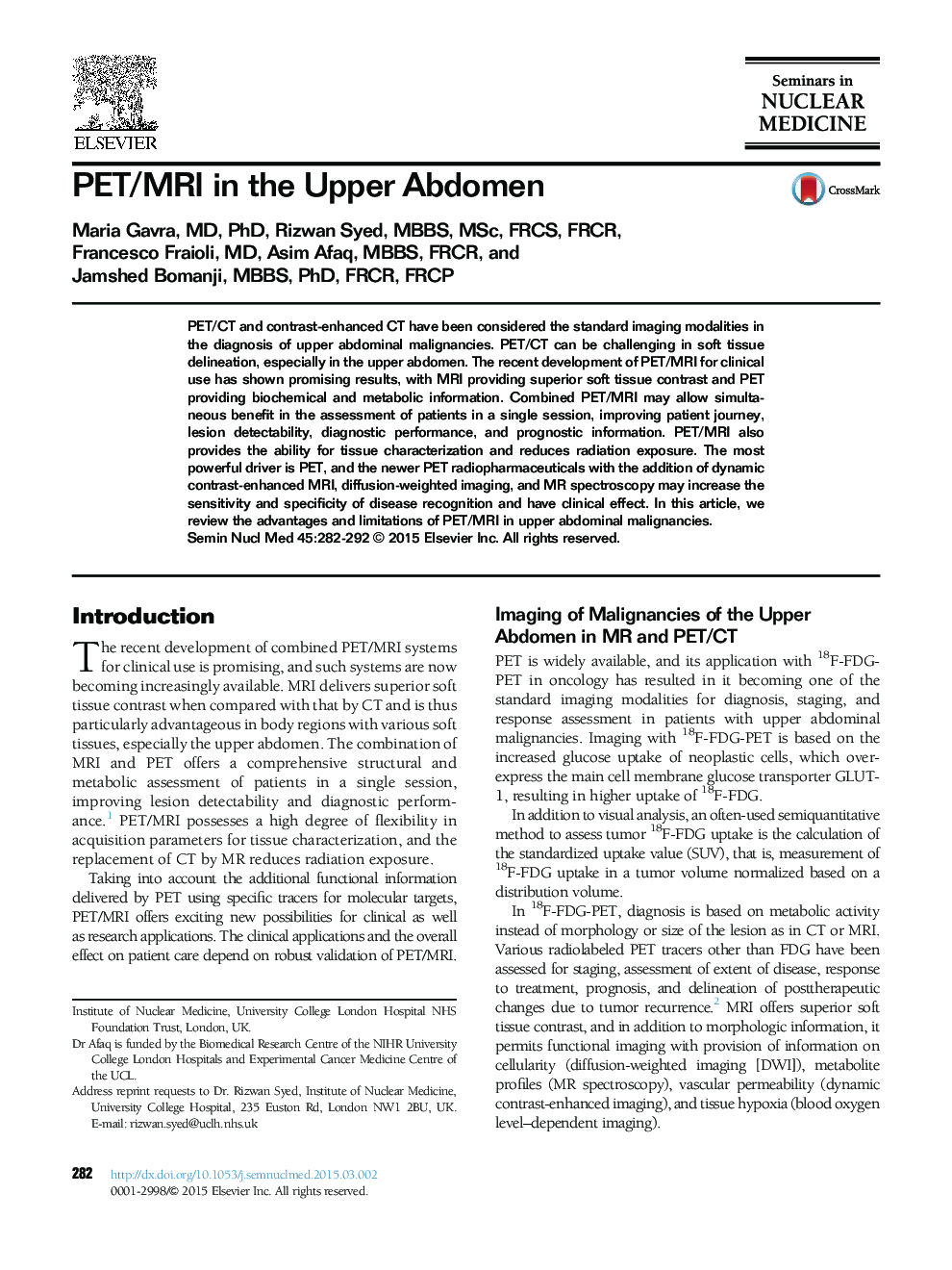| Article ID | Journal | Published Year | Pages | File Type |
|---|---|---|---|---|
| 4250930 | Seminars in Nuclear Medicine | 2015 | 11 Pages |
PET/CT and contrast-enhanced CT have been considered the standard imaging modalities in the diagnosis of upper abdominal malignancies. PET/CT can be challenging in soft tissue delineation, especially in the upper abdomen. The recent development of PET/MRI for clinical use has shown promising results, with MRI providing superior soft tissue contrast and PET providing biochemical and metabolic information. Combined PET/MRI may allow simultaneous benefit in the assessment of patients in a single session, improving patient journey, lesion detectability, diagnostic performance, and prognostic information. PET/MRI also provides the ability for tissue characterization and reduces radiation exposure. The most powerful driver is PET, and the newer PET radiopharmaceuticals with the addition of dynamic contrast-enhanced MRI, diffusion-weighted imaging, and MR spectroscopy may increase the sensitivity and specificity of disease recognition and have clinical effect. In this article, we review the advantages and limitations of PET/MRI in upper abdominal malignancies.
